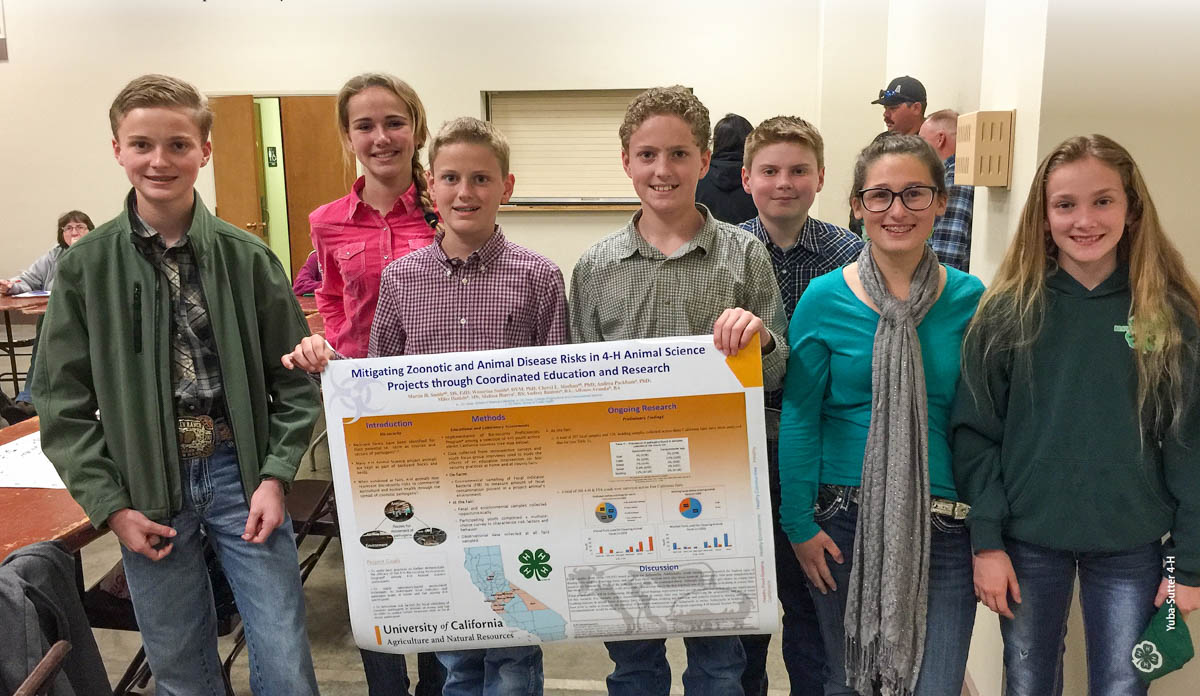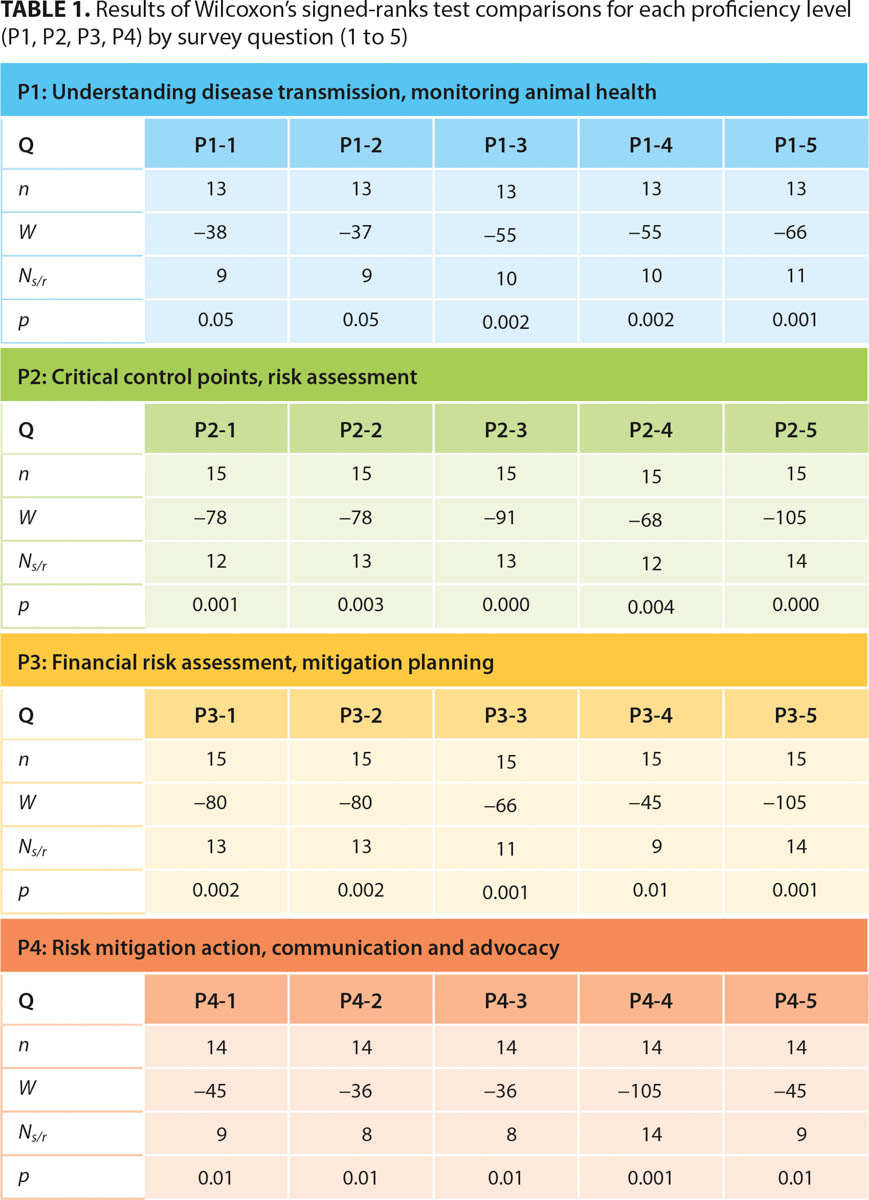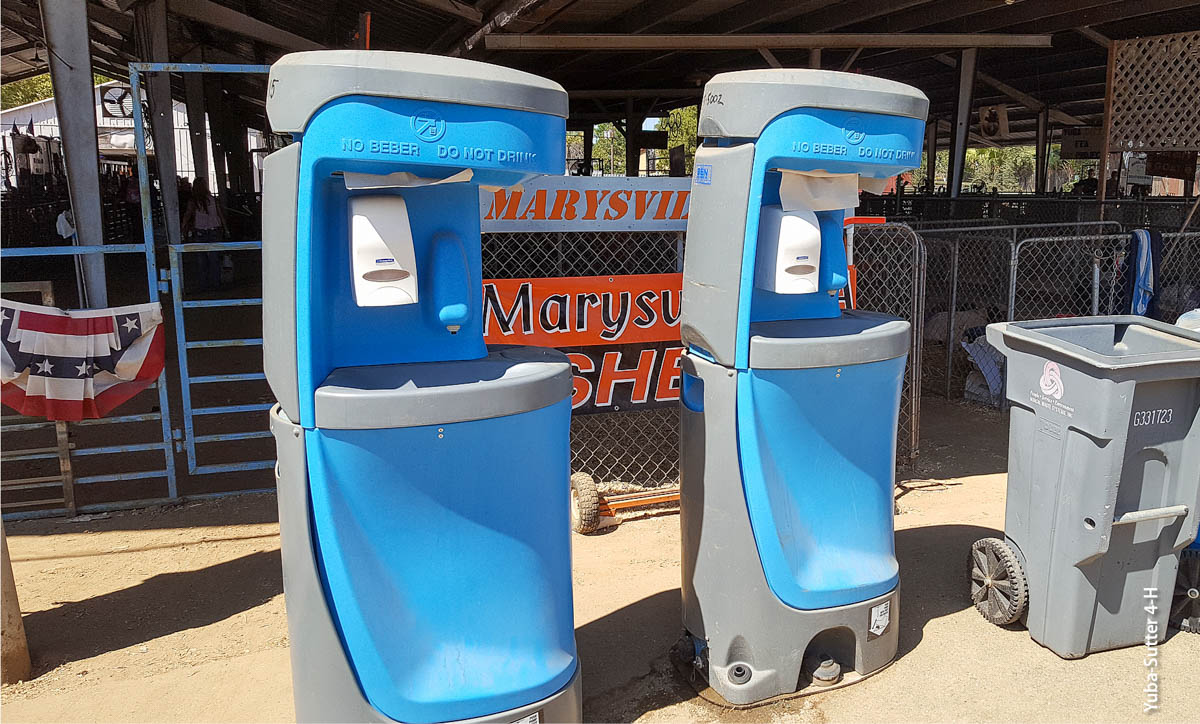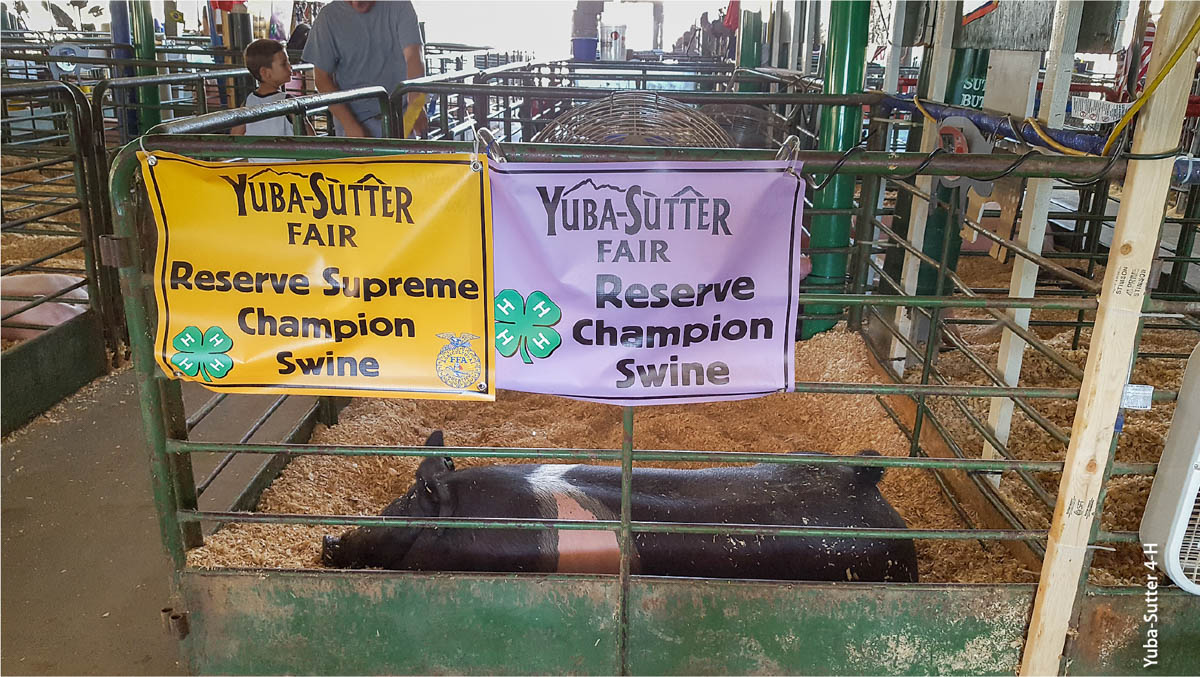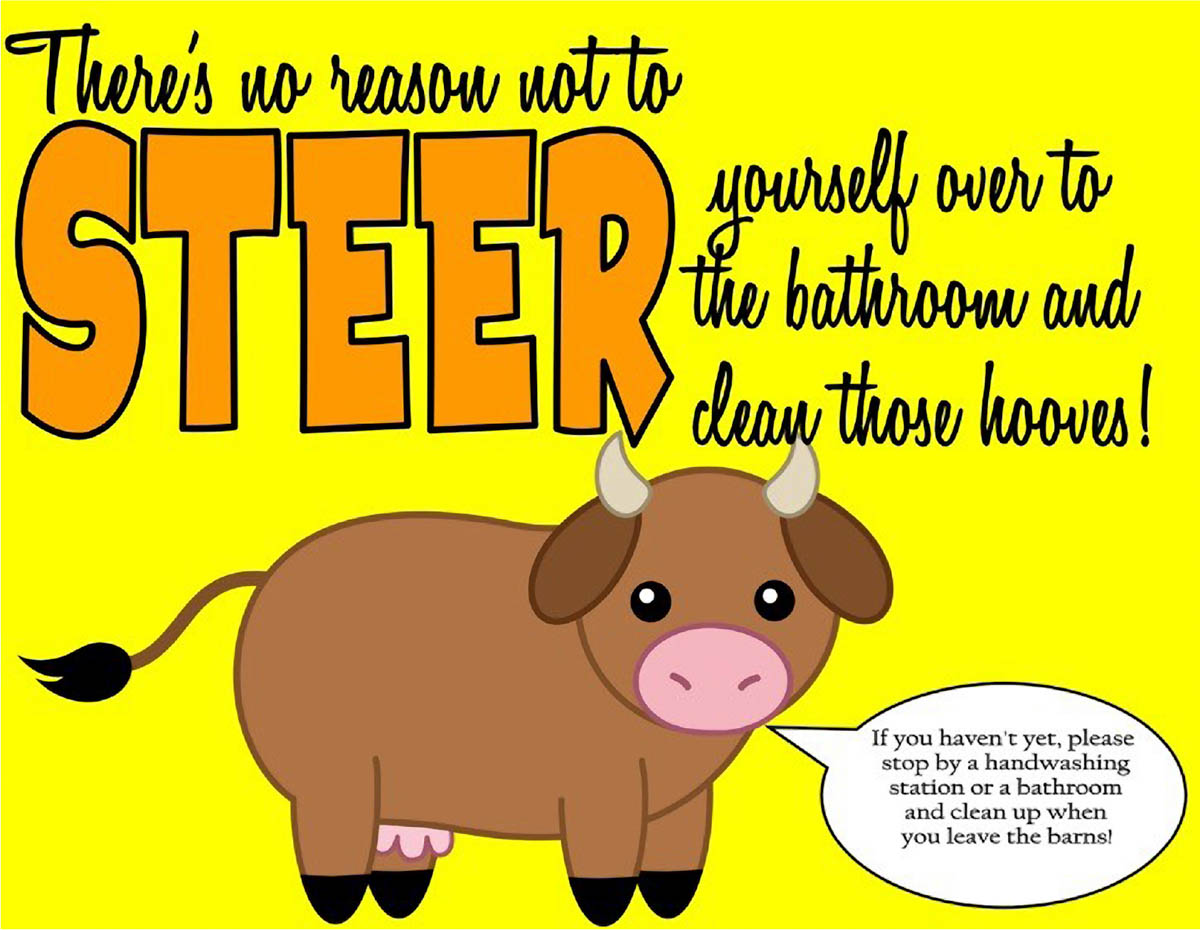All Issues
4-H youth advance biosecurity at home and in their communities
Publication Information
California Agriculture 75(1):33-39. https://doi.org/10.3733/ca.2021a0007
Published online March 10, 2021
PDF | Citation | Permissions
NALT Keywords
Abstract
Youth participants in 4-H animal science projects are involved extensively with raising and exhibiting agricultural animals, often on backyard farms (Smith and Meehan 2012). Since backyard farms can serve as sources and vectors of pathogens (FAO 1999; WHO 2011), it is critical that 4-H youth take an active role in preventing the introduction and spread of economically important animal diseases. Fifteen 4-H youth from two counties in California participated in the 4-H Bio-Security Proficiencies Program, a long-term community and citizen science project focused on animal and zoonotic disease risk education and mitigation. Then, in the role of community science experts, they acted upon the risk assessments and mitigation plans they had developed to improve biosecurity practices and reduce the likelihood of disease spread on their home premises and at their local county fair. They also extended their knowledge to the broader livestock exhibition community through outreach videos.
Full text
A key feature of citizen science is building upon knowledge acquisition through the application of scientific information to relevant issues of community significance (Mueller et al. 2012). In this manner, communities become the laboratories within which individuals can learn to understand problems and their causes, think critically about solutions and work collaboratively to achieve positive change (Cooper et al. 2007). For that reason, Barton (2012, 1) maintains that citizen science is “about participation within and for communities.”
Youth-focused community and citizen science refers to the engagement by youth in projects or activities “that produce data or results disseminated to and use-able by professional scientists, agencies, and/or managers” (Ballard et al. 2017, 66). According to Kozol (2005), young people can be trusted with input to scientific processes because they may approach issues without the biases of adults, particularly when scientists and teachers play an active role guiding inquiry. When youth are knowledgeable about the systems or contexts within which issues exist, as well as the associated science, they are less likely to be excluded from the process of developing and implementing solutions and can be powerful stakeholders in the process of community-based citizen science (Mueller et al. 2012).
Implementing science-based biosecurity practices in the care of 4-H animals is necessary to reduce risks associated with animal and zoonotic disease-causing agents. This is true both for home farms and public venues such as fairs and shows, to which youth travel with their animals as many as seven times during a single project year (Thunes and Carpenter 2007). The presence and persistence of fecal-borne pathogens (e.g., E. coli, Giardia, Cryptosporidium, Salmonella and Campylobacter) has been documented at California exhibitions (Daniels et al., unpublished; Keen et al. 2006; Roug et al. 2012), as have a number of practices associated with disease transmission risk such as fecal contamination of animal bedding and barn tools and infrequent use of hand-washing stations by visitors and exhibitors (Ibarra et al., unpublished; Smith and Meehan 2012).
Members of Browns Valley 4-H in Yuba County and Franklin 4-H in Sutter County became citizen scientists and stepped into the role of biosecurity experts, sharing their experiences and recommendations with members of the Yuba-Sutter Fair board of directors.
Recent UC Agriculture and Natural Resources (UC ANR) outreach efforts have focused on biosecurity education using the 4-H Bio-Security Proficiencies Program (Smith et al. 2011; Smith and Meehan 2013; see figure 1). The program includes five proficiency levels: the first, second and third focus on the development of scientific literacy related to disease transmission, as well as skills development via the assessment and mitigation of biosecurity risks on their home premises. The fourth and fifth levels include community science actions, including assessing biosecurity risks at a local fair, and developing proposed solutions and collaborating with community stakeholders to implement changes in fair policies and procedures to support biosecurity risk reduction strategies.
The program has been shown to improve youth's conceptual understanding of biosecurity, advance their skills associated with best practices and support related risk mitigation strategies on home premises and at public venues (Smith and Meehan 2013). These findings are consistent with literature emphasizing the importance of authentic engagement in advancing understanding of scientific concepts (e.g., Bybee and McCrae 2011; Falk et al. 2007); however, little research exists regarding the application of scientific understanding by youth to influence biosecurity policies and practices within their communities.
4-H biosecurity risk management project
4-H youth from two counties in California participated in a long-term, science-based biosecurity and risk management project that included completion of the five levels of the 4-H Bio-Security Proficiencies Program. As an extension of the program, youth in this project also had the opportunity to continue their community science actions over several years through collaboration with university academics to develop biosecurity educational videos and additional outreach efforts designed to engage their communities.
Youth participants were recruited by collaborating county 4-H program representatives and youth development advisors. Recruitment efforts included presentations at 4-H project meetings, county council meetings, informational brochures and phone and email contacts. Participation was voluntary and required that youth attend 10 to 12 project meetings over several months. Fifteen youth, ranging in age from 9 to 14, from Yuba-Sutter 4-H enrolled in the project. All youth were enrolled in animal science projects involving the rearing and care of one or more animals. Annual 4-H enrollment fees were covered for all project participants.
Biosecurity education
In the first phase of the project, the 4-H youth participated in the 4-H Bio-Security Proficiencies Program (Smith and Meehan 2013), a multiweek education intervention facilitated by adult 4-H volunteers. The volunteers received professional development on science content and effective teaching strategies, following a modified version of the Step-Up Incremental Training Model (Smith and Enfield 2002), whereby educators' capacity is built systematically through a series of workshops that include face-to-face seminars and synchronous (real-time) distance learning technologies (e.g., Adobe Connect and teleconference calls). This approach to professional development integrates multiple strategies (e.g., extended duration, emphasis on pedagogical knowledge and reflective practice, use of online strategies) recommended for 4-H volunteers (e.g., Kaslon at al. 2005; Smith and Schmitt-McQuitty 2013). The workshops were facilitated by Dr. M. Smith and Dr. C. Meehan.
The 4-H Bio-Security Proficiencies Program follows the five-module sequence outlined in figure 1. Youth were required to complete each component of a proficiency prior to proceeding to the subsequent proficiency level. They submitted a proficiency checklist to document the completion of those requirements. All youth who completed the stated requirements were awarded a pin and certificate at each level as recognition and evidence of their achievements.
Youth surveys
After finishing each proficiency level, youth completed surveys that measured changes in knowledge and skills relating to the themes for levels 1 through 4. The themes were understanding disease transmission and monitoring animal health (level 1); critical control points and risk assessment (level 2); financial risk assessment and mitigation planning (level 3); and risk mitigation action, communication and advocacy (level 4).
The surveys were designed using a retrospective format to reduce response shift bias, a threat to internal validity that can arise when using a pre/post format (Raidl et al. 2004). Surveys included five sets of paired questions: question A asked about the youth's current level of knowledge or skills relative to a specific topic after the educational intervention (post); question B asked about the youth's level of knowledge or skills relative to the same topic prior to the educational intervention (pre). Each question had four response categories ranging from poor to excellent. Four response categories were used to help ensure discriminating answers by participants and eliminate the potential misinterpretation of a midpoint (Croasmun and Ostrom 2011).
The survey response data were ordinal and not normally distributed; thus, the Wilcoxon's signed-ranks test was used to determine change between post and pre responses. Item-level analyses were conducted to allow for identification of differences within each survey. To demonstrate changes in both domains (knowledge and skills) across the four proficiency levels, we analyzed responses to all nine knowledge questions and all 11 skills questions combined.
Members of Browns Valley 4-H in Yuba County and Franklin 4-H in Sutter County participated in the Bio-Security Proficiencies Program offered by UC Davis. The members were very excited to see how choices they make actually affect their livestock. They saw firsthand why they can't be sloppy and pour grain into the pen. There are reasons for feed troughs. Members learned how pathogens are transferred. They realize how pathogens transfer from shoes to mouth if biosecurity standards aren't kept. The teens are more energized to share their videos with peers and community members about biosecurity. They want other 4-H members to know how to reduce the spread of diseases. They worked hard on their research and are doing things in the community to share the experience and the results of what they learned.
—Tracy Bishop, 4-H program representative, UCCE Yuba-SutterSurvey results
Significant (p < 0.05) improvements in survey response were found for all 20 questions across all four proficiency levels (table 1, fig. 2). Looking at the responses by domain, we found that the interquartile range of pre knowledge was broader than for pre skills, indicating a wider range in reported knowledge than skill abilities at the outset of the program. Increases from pre to post were significant for both knowledge and skills (knowledge: W = −3,913, z = −7.38, p < 0.0001; skills: W = −4,900; z = −8.42, p < 0.0001).
TABLE 1. Results of Wilcoxon's signed-ranks test comparisons for each proficiency level (P1, P2, P3, P4) by survey question (1 to 5)
FIG. 2. Box and whisker plot of pre and post survey responses for knowledge- and skills-based questions.
Community science at the county fair
Levels 4 and 5 of the Bio-Security Proficiencies Program focus on the communication and extension of knowledge and skills gained through the previous three levels (see figure 1). These proficiencies are the heart of the community and citizen science component of the program, as they ask youth to step into the role of biosecurity experts and share their experiences and recommendations with others in their community. To meet this requirement, youth participants developed and presented biosecurity improvement plans to leaders and officials of the Yuba-Sutter Fair.
Recommendations made by youth were taken under consideration by fair leadership, and changes in practice were implemented. Youth described examples of the improvements, including adding additional hand-washing stations and signage in and around barns and replacing the long-standing practice of mixing species in “champions row” with individual champion pens in species-specific barns to reduce the risks of pathogen transmission associated with interspecies contact.
Biosecurity recommendations made by 4-H youth were implemented by the Yuba-Sutter Fair leadership, including adding additional hand-washing stations.
To reduce the risks of pathogen transmission associated with interspecies contact, a significant change was made in the long-standing practice of mixing animal species in the “champions row.” After presentations by 4-H youth, champions were housed in individual champion pens in species-specific barns.
Community outreach videos
In the year following their completion of the Bio-Security Proficiencies Program, 4-H youth participants had an additional opportunity to share their experiences and knowledge with the broader fair and exhibition community. They helped a team from UC Davis Veterinary Medicine Extension develop three educational videos on science-based biosecurity best practices. In the videos, funded by the California Department of Food and Agriculture, youth made on-camera appearances and summarized their understanding of biosecurity risks, related their experience in risk assessment and mitigation and made recommendations to improve practices. The videos targeted three audiences: fair administrators, youth livestock exhibitors and the general public. The videos were posted on the Yuba-Sutter 4-H Facebook page, where they were viewed over 3,000 times in the first 24 hours. Videos can be accessed at ucanr.edu/sites/bio-securityeducation/.
Youth reflections
After participating youth had completed the Bio-Security Proficiencies Program and the videos project, we conducted a focus group interview with them and their project leader to gain more insights into their experiences. Focus groups are carefully planned discussions that collect information from a specific group of individuals (Kreuger and Casey 2015).
In response to a focus group question on why they became interested in the Bio-Security Proficiencies Program, youth responded as follows:
Our initial interest in the project was to learn more about safety and cleanliness for animals, not only for the animals but for people, too. We wanted to learn better ways to take care of our farm animals to make sure they're less susceptible to diseases. Additionally, by learning about biosecurity, we could help make sure our livestock and other animals were safe around us and other people; it was just safer for everyone. Lastly, by learning to make improvements in biosecurity we can help create a clean and safe product for consumers.
Youth described understanding the connection between biosecurity practices relating to hygiene and disease prevention.
We learned new ways to keep a clean environment for our animals, and that it's easier to clean your stalls every day so waste doesn't build up and make it worse for the animal. By doing this, it helps keep our animals from being exposed to some of the diseases we encounter in everyday life.
The project leader also described the incorporation of new practices into animal care routines as a result of youth learning about the importance of biosecurity to the health of their project animals.
For example, since participating in the project, [a 4-H youth] now disinfects his animals' pens before the animals arrive, and [a 4-H youth who had prior experience with a sick animal] started cleaning the water nipples and other tools regularly. [A 4-H youth] also began keeping her animals separated at home to reduce the likelihood of disease spreading between the different species in her care.
Over and above making changes to their practices at home, participating youth applied their knowledge about biosecurity to the care and housing of their animals at the Yuba-Sutter County Fair. The fair, as a public venue, presents different biosecurity risks and mitigation challenges given that youth exhibitors must contend with visitor behavior and may have limited control over how and where their animals are housed. Youth described individual decisions they made to improve biosecurity practices with their animals; additionally, they explained how they collaborated to make some larger-scale changes to support better biosecurity for the broader community of fair exhibitors and visitors.
The fair is the “big thing” for our 4-H program, and there are many people around the animals and touching them. So last year at our local fair we put up a rope at the back end of the beef barns to make sure people don't go over to our cattle and touch them. We also worked to keep their water cleaner. We put filtered water in their big water trough and put fish in their water to make it cleaner and more like home so the cows would drink. We've added hand-washing stations at the fair, so when you go from one barn to the next you can wash your hands so that you don't spread diseases to the other animals. There are also signs at the fair that remind people to wash their hands after they touch animals.
Signage to encourage hand-washing was one of the improvements at the Yuba-Sutter Fair that emerged from local 4-H youth completing the 4-H Bio-Security Proficiencies Program.
Although the Bio-Security Proficiencies Program had concluded over 2 years before, the 4-H youth described having sustained their engagement through a variety of outreach education efforts, some of which were recounted by their project leader:
[4-H youth] advised visitors at this year's fair to wash their hands before they pet other animals so they wouldn't transfer germs. These fair visitors responded in a positive manner and washed their hands. [A 4-H youth's] swine group presented on biosecurity best practices at their club meetings, informing 4-H members from other species groups and encouraging them to participate in good biosecurity practices. We were also involved in developing educational videos on biosecurity that demonstrated good practices at home and the fair. [A 4-H youth] spoke to FFA [Future Farmers of America] members at his high school. He said it opened their eyes to biosecurity and that his talk gave them a different perspective on the importance of keeping animals and their environments clean and the consequences if they are not.
Youth also shared their ideas regarding future opportunities to further develop their involvement with biosecurity education and outreach. They indicated their interest in expanding their roles as educators, mentors and resources to their broader 4-H community.
In the future, we as teen leaders should start doing lessons on biosecurity with new 4-H members early in the season before they get their animals. That way, they can have a little bit of background knowledge on biosecurity and we can keep the trend going further. So if we kept it going for the next couple of years it could keep carrying on down the line. [A 4-H youth] suggested that the group of 4-H members that did the Bio-Security Proficiencies Program could go around to different clubs in the area and give presentations and spread their knowledge with everybody in the area. It could help create lots of differences at the fair. Additionally, the group could do a field day presentation and demonstrate to other 4-Hers how to keep project areas and pens clean, both at home and at the fair. This could even be a 4-H Emerald Star project.
Youth became community science experts
Youth participants in this project developed expertise in science-based concepts regarding disease transmission and risk assessment. In addition, they built skill sets around risk mitigation and the application of best practices to home and fair settings. These experiences provided important, real-world contexts for youth to engage in and extend science. Through this experience, youth became community science experts and combined their scientific knowledge and skills with their experience in their communities to inform actions that pertained to relevant issues (Barton et al. 2013).
When youth are in this role, they are situated as experts in their communities and can help make a difference through the application of science in authentic ways. Additionally, with the scientific expertise youth bring to bear on relevant issues, the power dynamics within a community can be reorganized such that authority is shared and youth are recognized as having the capacity to lead (Barton et al. 2013). We saw evidence of this in the interactions between youth and the fair leadership, where a sustained relationship was developed that resulted in tangible, positive actions being taken to improve biosecurity practices.
According to Wandersman (2003), one important aim of community science is to help enhance the quality of life in a community through strategies such as prevention, health promotion and education. 4-H youth involved in this project became community science experts through their participation in the Bio-Security Proficiencies Program. Specifically, they advanced their knowledge and skills related to concepts such as modes of disease transmission, animal health assessments, biosecurity risk assessment and risk mitigation.
Subsequently, in the role of community science experts, the 4-H youth helped to improve the well-being of their community by identifying biosecurity risks at their local fair and presenting their findings and making recommendations (education) to fair authorities (Zaff et al. 2010). Youth worked with county fair representatives to implement many of their recommendations that focused on reducing pathogen transmission (disease prevention) to lessen the incidence of animal and zoonotic diseases (health promotion).
Not only did 4-H youth in this project follow the design principles outlined by Barton et al. (2013) to develop scientific expertise around a relevant issue and educate others within their community during the project, they sustained their engagement in community and citizen science efforts. Youth continued to work with their local fair to make additional site improvements to promote biosecurity; they engaged in the development of educational videos designed to educate the general public, fair exhibitors and fair administrators about good biosecurity practices at fairs and shows, they made presentations to various 4-H and Future Farmers of America (FFA) audiences and they made plans for future education outreach endeavors.
Relevant and meaningful engagement
When science is positioned from the perspective of the individual and is situated within authentic science-related situations that may be encountered in everyday life, science understanding and abilities become relevant and meaningful to the learners (Falk et al. 2007; Roberts 2007). This approach to advancing youth scientific literacy — referred to as a citizen's perspective — is emphasized in California 4-H (Roberts 2007; Smith et al. 2015). Specific to this project, it was important to the participating 4-H members to apply good biosecurity practices to the environments where they raised and showed their livestock; additionally, they saw the importance of sharing their knowledge and skills with other youth exhibitors, fair management and community members.
This project provided insights into how content and skills learned by youth through their participation in a 4-H curriculum can inform a meaningful service-learning project that is extended to members of their community. All of the curriculum materials needed to implement the Bio-Security Proficiencies Program are available free of charge at ucanr.edu/sites/youthscientificliteracy/.
We envision the Bio-Security Proficiencies Program as an important component of 4-H Animal Science projects where livestock, poultry or small mammals are raised for exhibition and recommend that it be incorporated into traditional 4-H Animal Science programs. Using it, 4-H staff and volunteers can support improvements in knowledge, skills and community science practices among youth members, and, potentially, reduce the risk of a disease event within their membership or community.



